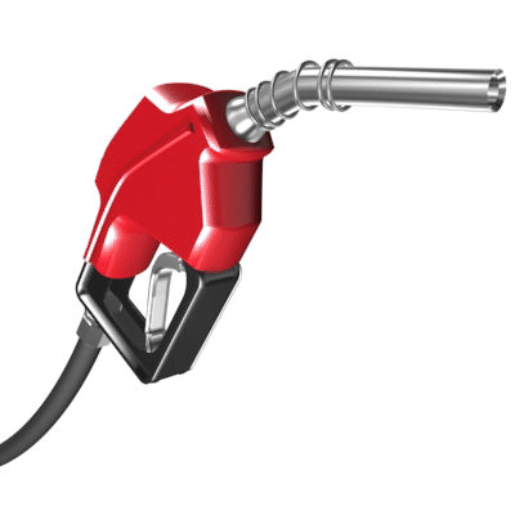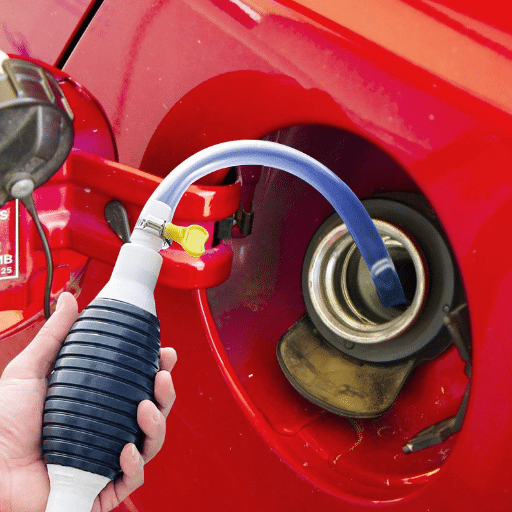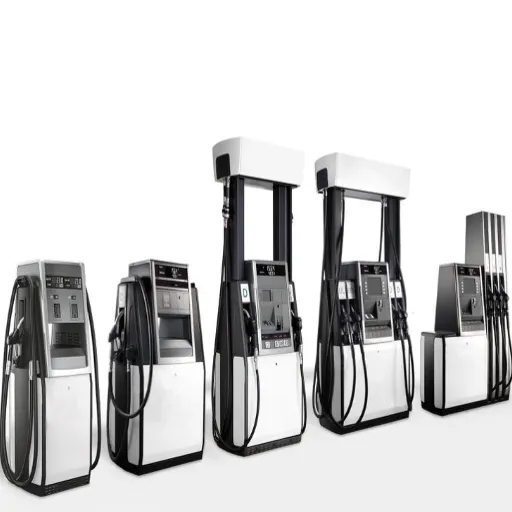Introduction to Cool Gas Stations
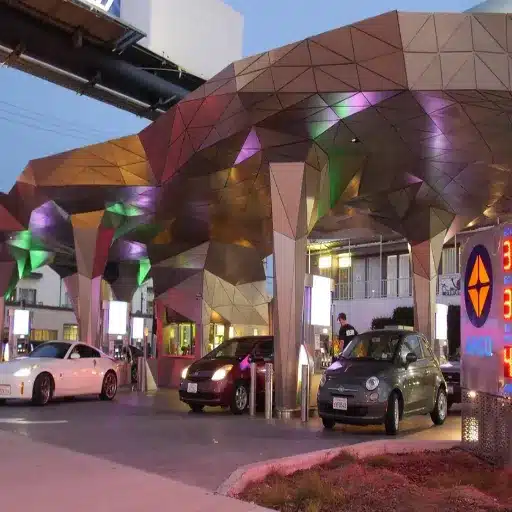
Gas stations, which were once considered mere functional spaces, have now evolved into places for show with architecturally innovative structures set amid sustainable landscapes. Contemporary architects and designers emphasize that gas stations must be environmentally friendly, energy-efficient, and user-conscious while retaining their traditional function of refueling vehicles. By harnessing renewable energy resources, expressionistic structure, and a sense of local identity, these stations create a new vocabulary for the fulfillment of pragmatic needs corresponding with aesthetic and ecological criteria.
What Makes a Gas Station Cool?
A sober or so-called gas station blends utility and the aesthetic of avant-garde allure quite well, with sustainable standards at its core. Solar panels and wind turbines are some of how contemporary gas stations may foster less dependence on conventional sources of power. Studies have revealed that using solar and wind energy methods reduces energy usage by up to about 40%, thus contributing significantly to environmental conservation initiatives.
With the advent of technology, traditional gas stations too have seen an evolution: From automated pay stations and real-time updates on fuel availability to AI-driven diagnostic checks for maintenance, these intelligent facilities enhance convenience and boost operational efficiency, benefitting consumers and operators alike. Some even provide electric vehicle charging and hydrogen fueling facilities as a nod to the alternative fuel transition calendar.
Another crucial aspect is innovative architectural design. These may include stations with green roofs that provide better insulation and may reduce urban heat, instead of those utilizing modular construction techniques to reduce waste and to provide an added level of flexibility. They combine elegance with a user-friendly environment, complementing the uniqueness of the experience for the visitors. Modern gas stations, through the various design choices, evolve from being merely a quick stop for refueling to becoming functional hubs of sustainability, technology, and aesthetics.
The Evolution of Gas Stations
Modern gas stations have turned into high-tech centers, integrating state-of-the-art systems to ensure efficiency in operation and convenience for customers. Automated filling systems and contactless payments are alternatives that have given end-consuming gas stations a facelift in terms of reducing waiting time and adding a layer of security to transactions. Reports from the industry suggest that there’s been a rise in the use of contactless payments in the retail space, including gas stations, with over 53% of global consumers already having embraced the method in very recent years.
Furthermore, digital signage and interactive kiosks have become increasingly common, allowing real-time updates of fuel prices, promotional offers, or weather conditions. These technologies improve user experience and enable the operators of the station to respond in real time to changes in market demand. IoT sensors inside smart fuel pumps streamline operations, as sensors can give early alerts for maintenance, which leads to minimum downtimes and maximum reliability.
To promote sustainable energy alternatives, the gas stations are also equipping themselves with electric vehicle (EV) charging infrastructure. With more than 280,000 EV charging points at gas stations worldwide by 2023, the industry faces a critical metamorphosis in addressing the transition toward renewable energy and the adoption of electric vehicles. This diversification allows modern gas stations to evolve into a multi-energy hub capable of serving a variety of consumers.
For much of its history, the gas station had been seen as nothing more than a minor place for refueling. The advances in technology and infrastructure seek to modify this perception by transforming gas stations into full-fledged service centers, catering to the new needs of the increasingly connected and environmentally conscious society. This more contemporary approach illustrates how the industry adapts and flourishes in a rapidly changing energy landscape.
Overview of Unique Features
⚡ EV Charging Infrastructure
High-speed charging with state-of-the-art monitoring systems to guarantee efficiency and reliability.
🌱 Alternative Fuels
Hydrogen, CNG, and biofuels adoption, flying the sustainability flag high while leaving space for the environmentally conscious.
📱 Digital Integration
Mobile payments, loyalty programs, and IoT systems providing personalized services and optimal convenience.
Different gas stations have adapted a variety of distinct features in consideration of the many energy needs of consumers and to provide an enhanced consumer experience. With all these features, gas stations are transforming into energetic hubs for energy and services, an answer from the industry to the question of technology and the environment.
Unique Features of the Coolest Gas Stations
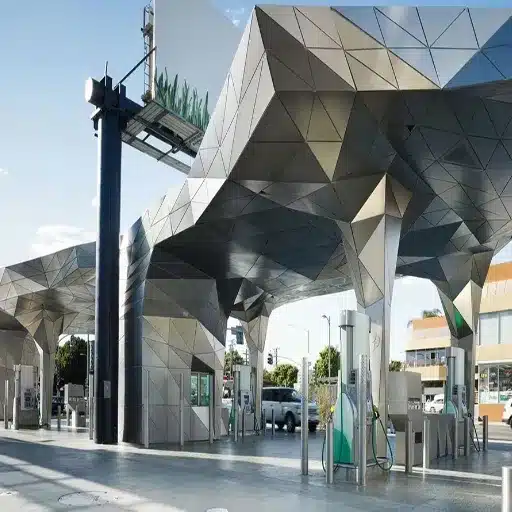
Coolest gas stations must be top-notch in architectural style, sustainability, and high technology for the convenience of the customer. They would thus bear contemporary architecture suffused with natural elements to present spaces of great beauty and warmth. Most would lean towards renewable energy in the form of solar and wind to minimize their carbon footprint. Then, some other services offered would be EV charging, gourmet food options, plush rest areas for sitting, and Manhattan-style convenience stores. Some also espouse digital technologies such as app-based payment and fuel availability in real-time-giving an edge to the customer in terms of efficiency and convenience. This is a mix of features that elevate the customer experience while going painstakingly into environmental standards and technological advancements of today.
Architectural Marvels in Fuel Stations
Modern fuel station design has evolved far beyond its utilitarian roots, mixing and matching architectural elements into an ensemble of function, sustainability, and aesthetics. As documented by Philip Johnson, Helios House in Los Angeles awesomely flaunts the LEED certification for its structure using recycled materials, including one of the first energy-efficient lighting systems, and with the addition of a green roof. In Aurland, Norway, the station presents a unique combination of a fuel stopping point and a scenic monument, working all-natural beauty integration into its minimalist eco-conscious guise.
The data thus establishes a new kind of interest for constructing fuel stations where sustainability takes center stage. The study of 2023 indicates that 45% of all new fuel station projects integrate solar panels or energy-saving systems to a reduced degree in operational carbon emissions. Moreover, with newer modular construction methods, the assembly is shorter, with minimal waste of materials. Customer experience, to an extent, takes priority where multifunctional spaces could also mean coworking spaces, cafes, or even occasions for eco-friendly retail.
These changes clearly suggest a reconfiguration of the purpose and perception of fuel stations. No longer the modest sites to top-up fuel, they are dynamic spaces that foster sustainability and advanced design—something that consciously now stands for the society’s increased commitment towards being environmentally responsible and working in tandem with innovation.
Thematic Designs and Concepts
Modern fuel stations are attempting to reduce their conventional functions-thematic designs and concepts emphasize the customer experience, sustainability, and harmony with the urban landscape. Innovative architectural styles consider the energy efficiency of these spaces and renewable energy options such as solar panels and wind turbines. Many stations now prefer modular and flexible design schemes for convenient alteration to evolving technologies, including EV charging hubs, and to infrastructure.
Moreover, the incorporation of thematic aesthetics that are site-specific furthers community interaction and brand recognition. For example, some stations might feature green roofs, vertical gardens, or natural materials to blend in harmoniously with the environment at large. Such sites are only enhanced by spaces meant for multiple purposes, such as co-working areas, retail outlets, or cafes, with these spaces becoming destinations with their own identity, crafted to fulfill varied consumer needs. These developments, in response to sustainability trends, further nurture loyalty among the customer base through suggestions for designs grounded in utility.
Environmental Sustainability at Gas Stations
While environmental sustainability at gas stations emphasizes reducing the overall ecological impact of their operations and advancing cleaner energy options, major approaches include the utilization of renewable energy sources such as solar or wind power to run station facilities, thus greatly reducing greenhouse gas emissions. The installation of low-energy LED lights and high-tech fuel vapor recovery systems to reduce contamination is also common among gas stations.
Developing an EV charging infrastructure alongside traditional refueling is another very important aspect. Doing so will help augment the already increasing transition towards electric vehicles and thereby lessen the dependence on fossil fuels. From water conservation perspectives, rainwater harvesting and water recycling for vehicle washing are among the popular methods.
When it comes to sustainable building materials, they are getting trending again, and recycled steel or low-carbon concrete are some of the materials installed in new structures. Waste systems, as the proper installation of recycling bins and hazardous waste disposal systems, go a step further towards environmental safeguarding. All of this shows how gas stations are now changing to fit the new environmental legislation while also attending to the changed needs of consumers.
Cool Gas Stations in California
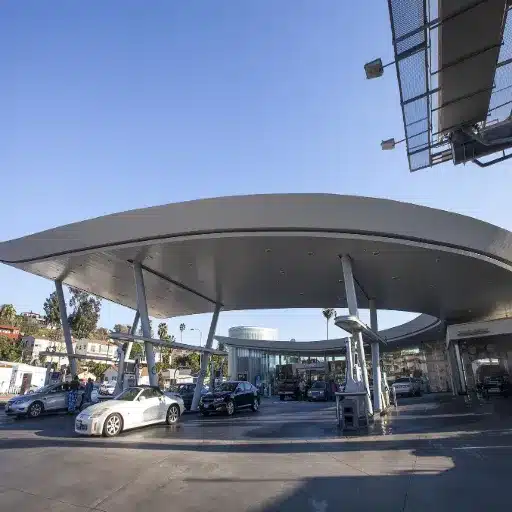
From the unique style of gas stations to their mix of services and environmental initiatives, California makes sure that some truly special gas stations greet the eyes of a visitor. Such are:
- Helios House, Los Angeles – boasts an eco-friendly gas station in its name with sustainable design that makes use of recycled materials in its construction, solar panels for energy generation, and a green roof, thus serving as a green example among fueling stops.
- Cruise-In Palm Springs-style – This place holds esteem for its in-house retro midcentury design; with its offering, it would give a fitting roadside experience, reminding one of Palm Springs’ own iconic architecture.
- Chevron Station in Beverly Hills – From the point of view of beauty in detailing and function-giving toward a sleek, modern style, it is inspired by the connotation of a futuristic style.
It is gas stations like these that best characterize the flagship traits of California: sustainability, design, and fast-track consumer experience.
Helios House: A Sustainable Fuel Stop
Helios House in Los Angeles is heralded as the first gas station in the United States to achieve LEED certification, thus embracing a sustainable and environmentally conscious design philosophy. This state-of-the-art gas station boasts recycled stainless-steel roofing, drought-tolerant landscaping, and solar panels for on-site renewable energy generation. The station also embraces water conservation strategies, including rainwater harvesting and low-flow fixtures. In addition to its sustainability efforts, it promotes education and outreach, inspiring clients to take on green practices. Helios House integrates state-of-the-art techniques with energy-saving etiquette to forge the path on which sustainable fuel infrastructure shall tread.
Architectural Marvels in California
The Broad – An Art Museum
The Broad is a Contemporary Art Museum located in Los Angeles. It is famous for its dynamic architecture and the art collection it holds. The shell of the museum was created with the collaboration of Diller Scofidio + Renfro and Gensler to feature the “veil and vault” concept. The external facade of the building is made from honeycomb-type skin, hard and delicate, of fiberglass-reinforced concrete panels. Almost like a stained-glass window, it allows sunlight to illuminate the building while shielding the artworks inside. This approach is in line with sustainable design philosophy and really cuts down the amount of energy use, thus enhancing the overall experience of the visitor in the museum. Needless to say, with its 2,000-strong collection of postwar and contemporary art, it is one of the major landmarks in California.
The Getty Center
The center appears to sit on a mountain dominating Los Angeles. From the modern architectural perspective, even landscape design is deemed fancy for this place. Designed by Richard Meier with a feeling of purity and geometry, this space sets itself with an emphasis on natural light and open areas. Travertine stone and aluminum steel clash in a harmonious manner with the opposing hills. The Getty, therefore, integrates state-of-the-art technology to preserve the environment, featuring climate controls for the galleries and sustainable water management processes. Apart from the architectural infinity, the center is home to nearly all art collections, research facilities, and gardens, thus putting it into a cultural and architectural affirmation.
Hearst Castle
Sitting high above the hills of San Simeon, Hearst Castle is an estate of national significance left by the architect Julia Morgan. Constructed from 1919 to 1947 for the newspaper magnate William Randolph Hearst, the estate has an opulent yet eclectic-style mixture that includes Spanish revival and Mediterranean. Grand staircases, ceilings that have been carved with great precision, and vast areas for gardens are the major features of the castle. Further on with regard to its engineering, the castle boasts a private water supply and energy systems that were considered advanced for their time. Nowadays, Hearst Castle is a museum and serves to showcase its crime on the early 20th-century luxury and creative design.
Local Attractions Near California Gas Stations
California gas stations often serve as access points to remarkable local attractions that capture the state’s diverse geography and culture. Often, near gas stations on the major Indian highways, travelers find scenic state parks, legendary landmarks, and urban centers bursting with life.
- Joshua Tree National Park (near I-10 gas stations): The park is famous for desert landscapes, rich with unusual rock formations and flora such as the iconic Joshua trees. It is a fantastic place for hiking under the stars, as well as some of Southern California’s finest stargazing and natural desert beauty.
- Golden Gate Park (near San Francisco stations): This park is adjacent to many urban gas stations and has more than 1,000 acres of trails, gardens, and cultural landmarks, including the California Academy of Sciences and the de Young Museum. It’s an urban oasis with natural and artistic attractions.
- Hearst Castle (near Highway 1 stations): The scenic Pacific Coast Highway of California offers one of its prime destinations, Hearst Castle. The historic grounds of the castle, plus the Mediterranean-style architecture, are worthy of a visit, all while enjoying the way that the Atlantic Ocean caresses the coastline.
Such locations, sheltered between California’s gigantic network of gas stations, are perfect diversions for a traveling soul to keep his or her road trip memorable. Accessibility to the wonders of nature, as well as the treasures of culture, enhances the stops to fill up memories with fun.
Iconic Gas Stations Worth a Stop
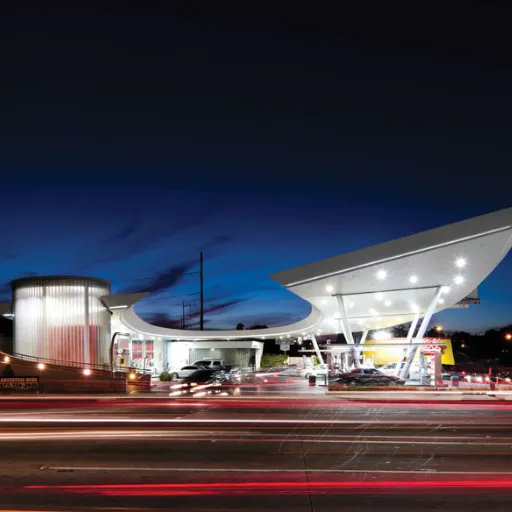
- Roy’s Motel and Café (Amboy, California): Historically known to be along Route 66, Roy’s is indeed a classic example of mid-20th-century Americana. It is almost a requirement to be visited by history buffs and road-trippers due to its Googie architecture and neon signage.
- Wall Drug Store (Wall, South Dakota): Wall Drug grew from a small drugstore in the 1930s into a sprawling roadside attraction. During the day, it has gas stations, eateries, and shops for the unusual-cum-wonderful.
- The Buc-ee’s chain (Various locations in Texas): Across Texas, these enormous establishments provide a full range of amenities; their restrooms are reputedly the cleanest, boast every snack imaginable, and they even have car washes. It is now very much a road trip icon.
- South of the Border (Hamer, South Carolina): Located on I-95, this kitschy landmark places a gas station in a tourist complex of a grander size with restaurants, gift shops, and an observation tower. The colorful atmosphere makes it an unforgettable stop for good tourism.
These iconic gas stations offer more than the mere function of refilling vehicles: they also provide experiences that enrich the road trip.
The Historic Route 66 Gas Stations
For many Americans, it is hard to think of any more iconic and historic gas stations along Route 66 than those that held the mirror to America’s automobile culture. Gas stations in themselves were service points for vehicles, but they also functioned as business hubs, tourist attractions, and landmarks in their own right.
One interesting example is the Tower Conoco Station of Shamrock, built in 1936. The Art Deco style design with a tower lit up by neon light glorified the spirit of an era, marrying functionality with dramatic aesthetics. The other historic station, the Soulsby Service Station of Mount Olive, had been in operation from the 1920s until 1991. This somewhat understated station preserves the dignity of roadside architecture in early America. Then there is the Kan-O-Tex Service Station in Galena, Kansas, now serving as a visitor center and café, which celebrates the history of these sites while showing how they have evolved.
Each of these locations tells a story from the golden days of travel on this magnificent highway. Gas stations here were anything but utilitarian; they were lively parts of the American road trip experience.
Gas Stations with a Twist in the South
Fuel stations throughout the South are breaking away from the stereotype of ordinary fueling stops. Buc-ee’s, for one, has gathered a cult fan base for its colossal facilities, which have hundreds of fueling pumps, sparkling clean restrooms, fresh foods, including barbecue and bakery items. Another establishment to make the list is The Pantry by Parker’s, located in Savannah, Georgia, serving fine dining with the convenience of hand-prepared meals, local wines, and even extra-coffee options. Likewise, Tiger Fuel’s outlets in Virginia favor a boutique approach centered on customer service and local products. These gas stations are among the few that are few-and-far-between to combine hospitality, sustainability, and regional flair with the basic functions of a filling station, thereby turning the destination into a place and not just a pit stop.
Global Perspectives: Cool Gas Stations Worldwide
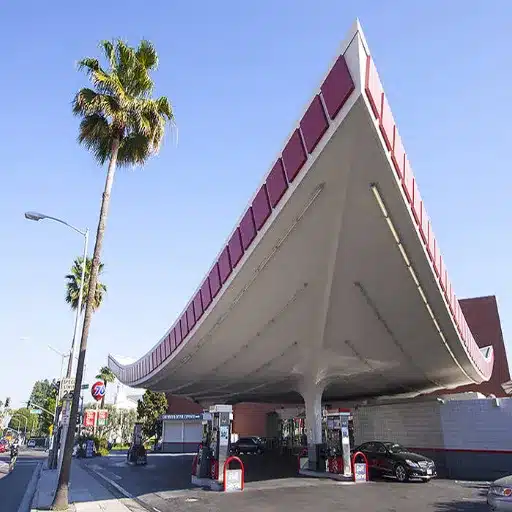
The ordering and categorizing of gas stations all across the world have changed into architectural landmarks and centers for innovation. Helios House is a classic example of a beautiful eco-friendly creation, where recycled materials are brought in, in conjunction with solar panels and efficient water systems, to cut down on the environmental footprint. Orival Gas Station, perched in Belgium, on the other hand, pairs the unique aesthetic of bold modernist architecture with a silhouette of excellent functionality that draws people in. One other interesting case has more of a historical angle: Esso Mobil Station in Norway, designed by architect Georg Fasting. This brings out the best from two different worlds, namely those of great-looking spaces and culturally relevant ones, where architecture mixes with usage for practical, visually stunning, and culturally significant spaces.
Gas Stations with Unique Themes
Gas stations with iconic themes tend to rise above their ordinary function of merely refueling cars, morphing into landmarks that embody regional culture, history, or the spirit of innovation. For example, we have the Shell Service Station of California, with its building that looks like a giant golden clam shell-shutting the gulf between art and use in drawing attention. The Jack Colker Union 76 Station in Beverly Hills boasts a canopy that comes under the purview of Googie architecture, taking its cues from speed and the ideas of space exploration. Another example is the Helios House in Los Angeles: an environmentally friendly station fitted with recycled materials, solar panels, and green roofs. All of these fuel stops prove that themed designs enrich the user experience while leaving behind a memory that sits at the confluence of function, art, and innovation.
Artistic Designs from Around the World
The document presents no question per se, although I would say that in answer to one concerning the place of artistic designs in gas stations, those designs exemplify how architecture may rise above mundane function to create spaces that are innovative, memorable, and representative of cultural or technological aspirations. By way of unique aesthetics and practical utility, these examples show how design molds experiences from the ground up and remains imprinted in global memory.
Experiences Beyond Fueling Up
Architectural embellishments at gas stations work well on two fronts: they marry functional needs with aesthetic charms to move beyond the ugly duckling of utility. Such designs strengthen user experience, creating places that are scenic and culturally recognized at the same time. The modern face put on the architecture increases client attraction, thereby mortgaging time spent in otherwise meaningless errands into cherished moments, while also giving expression to the technological advances in sustainable and efficient pattern application. Such architecture gives an uplift to the branding of a company and provides an interesting dialogue with the value system of time and culture of the community; moreover, it forms a link for practical use on a wider impact on the environment and society.
Reference Sources
1. “The Social Life of Gas Stations” (2016)
3.”Load Profiling for Gas Stations Using Cluster Techniques” (2016)
Frequently Asked Questions (FAQs)
What eye-catching qualities do these cool gas stations have?
Many cool gas stations have unique architectural features so particular that the doors have funky designs. Some are restored to showcase the original charm, while others incorporate more contemporary stylistic elements such as stainless steel canopies. These architectural features create visual interest and offer functional value.
Where can you find the renowned Helios House gas station?
Located in California, the Helios House features an innovative design wherein the roof collects rainwater. This gas station is a stellar example of how a modern service station can be both sustainable by design and simply striking to look at.
What’s the story behind Jack Colker’s Union 76 gas station?
The Union 76 gas station in California is historic and, thus, peculiar. Established when gas stations were still evolving, it has become a landmark worthy of visitors with an interest in either history or funky architecture.
Are there any cool-type gas stations to be found in Winston-Salem in North Carolina?
There are indeed several cool-type gas stations in Winston-Salem to show the architectural heritage of the region. Some of these are historic service stations that have been restored, half the time letting you peek back into the past, and the other half offering all the modern-day stuff you need to perk you up on the road.
What gives Southern gas stations their distinct character?
Southern gas stations often encapsulate the life history, culture, and traditions of the land. Quite a few of the southern stations boast designs inspired by regional architecture. Some have references to historical events, such as the Teapot Dome scandal, showing how history influences the present.
Are full-service gas stations still in existence?
Some unique locations still provide a gas stop with a human touch, for instance, filling up a car while it is being serviced. Such stations are actually performing the task of nostalgia for travelers who still have that old-school notion of having a gas station in mind.
What things would I have to look for in a cool gas station on the road?
When choosing a gas station on the road, you want to take into consideration architectural designs and amenities, and maybe some unique features. Try to find stations that were restored, or big splash designs that give awesomeness to your trip through great photography.
- Automated Fuel Dispensing System: Revolutionizing Fuel Dispense Efficiency
- Understanding Fuel Dispenser Parts: The Main Components of Fuel Dispensing Systems
- Are The Explosion-Proof Materials Of Explosion-Proof Oil Tanks Reliable?
- Explore the top 10 fuel dispenser manufacturers.
- How Does a Gas Pump Work: Understanding the Mechanisms and Safety Features
- Gas Station Construction: Building a Gas Station with Construction Costs in Mind
- Explosion-Proof LED Light Fixtures: Ensuring Safety in Hazardous Areas
- Luxury Gas Stations: Discovering Beautiful Gas Stations Across the USA and Italy


